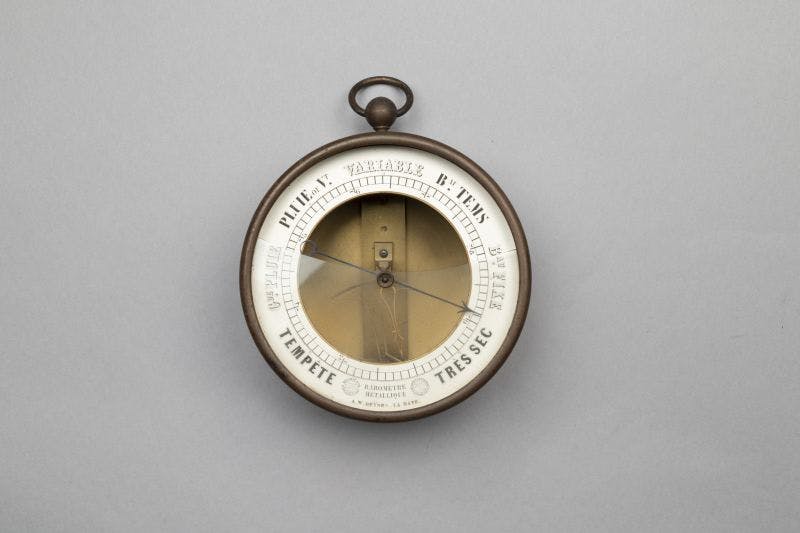
A. W. Heyne
Maker

A brass, drum-shaped instrument with a suspension ring on top, and a white enamel barometer dial with numbers ranging from 73 to 79 centimeters of mercury and meteorological terms in French corresponding to the numbers. There is a hole in the center of the dial that reveals the some of the barometer’s mechanism. There are two brass indicators for the dial, one in a dark metal, and the other in a bronze-colored metal. The instrument has a broken glass face with part of the glass missing. The bottom of the dial has two exhibit award medallions from the World Medal Exhibition in 1849 and the London Universal Exposition in 1851.
Unlike many barometers of the era that relied on atmospheric pressure on mercury, this aneroid barometer relies on a technology called the Bourdon tube. The French engineer Eugene Bourdon (1808-1884) developed a gauge that consisted of a tube bent into a coil with a pointer attached to it. As the pressure in the tube changes, the coil winds or unwinds, causing the pointer to move along a calibrated dial which corresponds to the centimeters of mercury in a traditional mercury barometer.
A.W. Heynen, an instrument maker in Den Haag, produced this instrument under license from Bourdon and Felix Richard, who designed the inner gears that allowed the changes in the tube to register on a calibrated scale.

Maker

Maker

1990.004.008